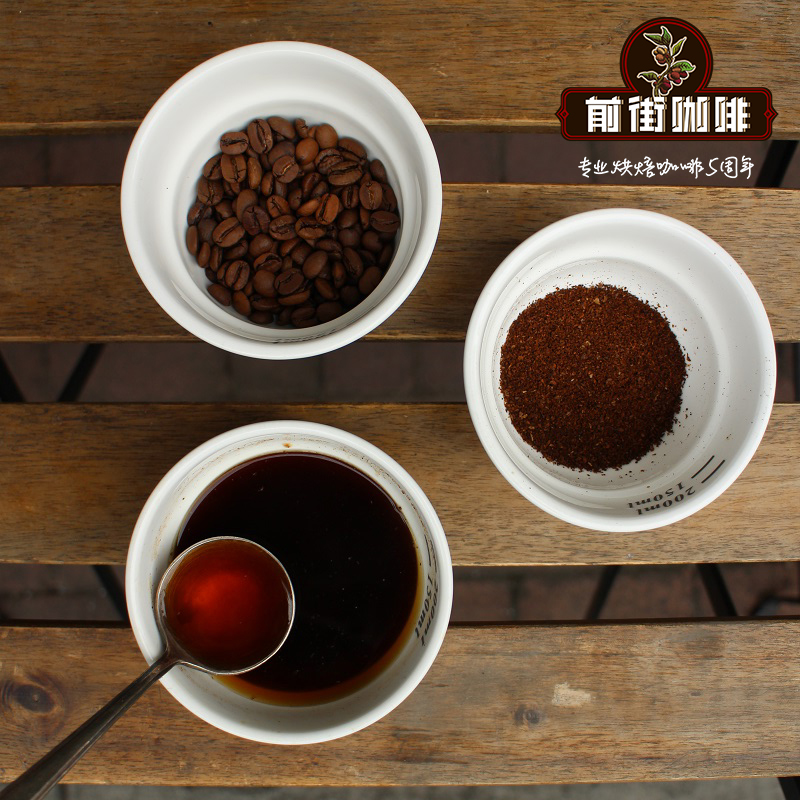Coffee growing Coffee Leaf Rust Coffee Industry challenges Coffee Culture

Professional coffee knowledge exchange more coffee bean information please follow the coffee workshop (Wechat official account cafe_style)
In late summer 2012, coffee farmer Mario Kortho (Mario Mendoza Corleto) toured a coffee garden on a hillside in Santa Ana, the second largest city in El Salvador, Central America.
Suddenly, he found an abnormal phenomenon: the leaves of some of the trees were covered with orange-red fungus, and a lot of leaves fell from the ground.
This is leaf rust. Since the 1970s, this plant wilt has been a fear in the minds of coffee farmers in El Salvador.
Usually, spraying fungicides once or twice a year can effectively prevent these diseases. However, it doesn't work now.
"this year is completely different," Kortho told me recently. "the spray doesn't work."
With the passage of time, the problem becomes more and more serious.
By September, the once luxuriant coffee trees in Kortho's coffee garden had become a barren land.
In the hot sun, the green fruit also becomes too hard to produce candy red coffee cherries. In the past, Kortho would hire workers to pick out these coffee cherries and make them into coffee beans, which would then be used for baking.
But in that year, half of the trees on his hundred-year-old farm died, and the total harvest was only 1/4 of the usual output. As the situation worsened, Kortho had to lay off most of his workers the following year.
The experience of Kortho's farm is happening across El Salvador, as well as in Honduras and Guatemala. These regions used to be the source of raw materials for major coffee brands in western countries.
Over the next two years, leaf rust spread to coffee farms across Latin America, directly affecting more than half of the coffee harvest and causing more than $1 billion in direct losses.
In the face of this economic collapse, many coffee farmers and factories have "taken the best policy", which also triggered an immigration crisis.
The seemingly glamorous coffee industry is facing unprecedented challenges
So how on earth did leaf rust spread overnight?
Researchers believe that a fungus that follows the evolution of coffee crops in the Ethiopian coffee jungle has recently undergone a major mutation and has become highly invasive. In addition, under the influence of global climate change, the hotter and humid weather conditions in the local area have also objectively undermined the resistance of coffee trees to natural diseases.
The rapid spread of leaf rust has not only brought huge losses to individual coffee farmers, but also greatly shaken the entire global coffee industry chain worth 175 billion US dollars.
Coffee is one of the least genetically diverse and therefore least resistant modern crops on the planet on which we live.
These coffee trees, especially those with good varieties that can produce delicious coffee beans, have not changed much since the 19th century. As one industry insider put it, "the whole coffee industry is driven by 'software' with a history of 150 years."
In fact, leaf rust has declined a lot since 2012 due to a slight improvement in the climate and man-made control measures.
But researchers are confident that it will soon make a comeback, adding to the damage to coffee farmers who have experienced economic collapse and halved harvests.
Whether it's growing and selling coffee, or for people who just like to drink coffee, this change has far-reaching implications. Based on this, a group of scientists are working hard to save the coffee industry as much as possible before the coffee industry deteriorates.
The seemingly glamorous coffee industry is facing unprecedented challenges.
In recent decades, the role of coffee is no longer a pure wholesale commodity. People mix coffee with other foods to make special drinks with a cultural flavor, and even affect the sales of alcohol to a certain extent.
Although the culture and habits of eating coffee have changed, the traditional coffee growing industry has not changed.
Even if we pay more and more attention to the quality and taste of coffee, we can't stop the best quality coffee in the world from becoming more and more vulnerable to diseases such as bad climate change and leaf rust.
Worldwide, there are roughly two main types of coffee crops: Coffee Arabica and Coffee Robusta.
Robusta is a kind of variety with tenacious vitality and does not need too much maintenance, and its ability to resist diseases and pests is also relatively strong. However, Robusta's taste is not good, so it is basically used to make instant coffee. If it is used to make hand-brewed coffee, its quality and taste will be greatly reduced.
It is no exaggeration to say that if you are a coffee lover, you certainly don't want to drink Robusta for the rest of your life.
By contrast, Arabica accounts for more than 60% of global coffee production, making it the coffee variety most people like.
As far as Arabica is concerned, its planting technology is relatively exquisite and demanding, but this kind of coffee bean tastes more silky and is a more familiar and favorite coffee variety.
END
Important Notice :
前街咖啡 FrontStreet Coffee has moved to new addredd:
FrontStreet Coffee Address: 315,Donghua East Road,GuangZhou
Tel:020 38364473
- Prev

An introduction to Costa Rica A description of the common varieties of Kaddura and Kaduai in American beans
Costa Rica, located in Central America, is the country where coffee was first introduced into Central America. It has a long history and has a complete coffee organization system from production to marketing. Because it is located in the Central American Isthmus, the volcanic soil is very fertile and the drainage is good, especially in the central plateau CentralPlateau, where the coffee growing land is stable due to the fertile volcanic ash and mild and suitable temperature of the volcanic terrain.
- Next

How does the bean temperature change during coffee roasting? The function of the throttle
There are two main ways to describe how the bean temperature changes during baking: the bean temperature curve and the rising rate. The bean temperature curve is used to determine the actual temperature of beans. It looks a bit like a check mark. RoR, however, measures the rate at which the temperature of coffee beans rises. This is measured over a specific period of time, usually between 30 and 60 seconds. For example, you can choose a 30-second
Related
- Beginners will see the "Coffee pull flower" guide!
- What is the difference between ice blog purified milk and ordinary milk coffee?
- Why is the Philippines the largest producer of crops in Liberia?
- For coffee extraction, should the fine powder be retained?
- How does extracted espresso fill pressed powder? How much strength does it take to press the powder?
- How to make jasmine cold extract coffee? Is the jasmine + latte good?
- Will this little toy really make the coffee taste better? How does Lily Drip affect coffee extraction?
- Will the action of slapping the filter cup also affect coffee extraction?
- What's the difference between powder-to-water ratio and powder-to-liquid ratio?
- What is the Ethiopian local species? What does it have to do with Heirloom native species?

